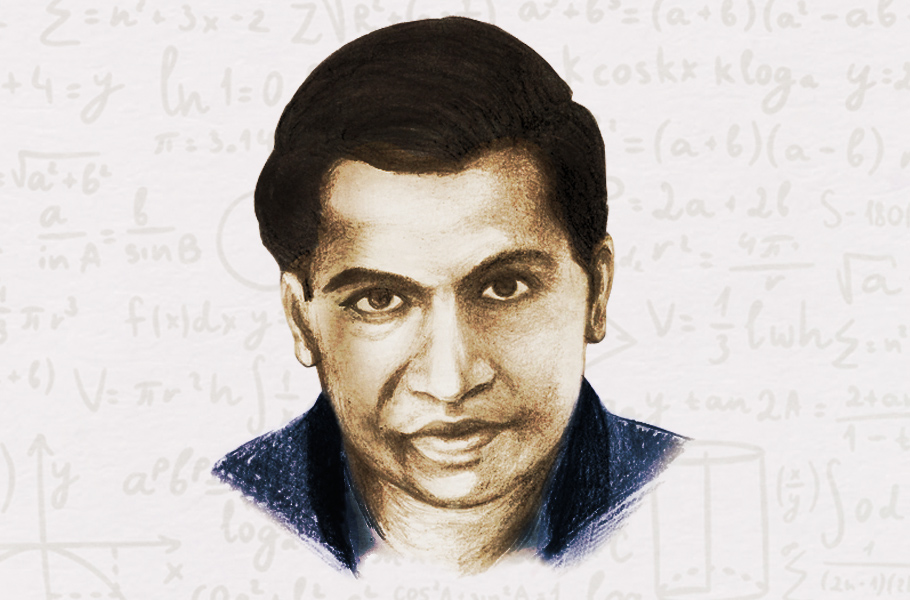
Rogers-Ramanujan identities are an eternal golden braid
Srinivasa Ramanujan's story is unconventional. A self-taught mathematical genius, in a short but prolific life of just 32 years, he published about 4,000 theorems on many areas in mathematics.

Srinivasa Ramanujan’s story is unconventional. A self-taught mathematical genius, in a short but prolific life of just 32 years, he published about 4,000 theorems on many areas in mathematics. His results have found applications many decades after their discovery and his impact on development of number theory, modular forms and basic hypergeometric series is profound.
On the birth anniversary (December 22) of Ramanujan, remembering two other gifted mathematicians, L.J. Rogers and Issai Schur, whose work in some topics overlapped with Ramanujan’s, is in order.
What do gas particles have to do with the mathematician Ramanujan? Chalk and cheese, if one were to jump the gun. However, if you were physicist Rodney Baxter from the far side of the world in 1979, you had just then found an application of “Rogers-Ramanujan identities” (an identity, roughly speaking, is an equation) in explaining a physical model of gas particles.
Related news | When Ramanujan did mathemagic with a taxi number
The history of Rogers-Ramanujan identities goes back to 1893 when English mathematician L.J. Rogers published proof for certain equations in hypergeometric series (a series with ratio of each contiguous pair as rational function). However Rogers’ findings were not noticed in the mathematical community. Ramanujan re-discovered these equations in the years before he left for London in 1914. As was his wont, Ramanujan’s results were from intuition and did not have rigorous proofs. When Ramanujan developed the identities, he looked at it as infinite series expressed as infinite products, finding the ratios of the series and expressing them as continued fractions. Then in a leap of intuition, Ramanujan evaluated certain specific values that astounded Hardy. However, he could not provide proof of how the ratio of the series lent itself to be expressed as continued fraction.
And in 1917, Ramanujan chanced upon the proofs of Rogers which led to their collaboration and publishing a simpler proof.
Rogers was a gifted mathematician, polyglot and a virtuoso pianist. Hardy, whose eye for spotting talent was his long suit, said that Rogers came the closest to Ramanujan in his mastery in certain areas of mathematics. Rogers, like Ramanujan, was ahead of his times. His research into Invariant theory found applications in relativity later; just like Ramanujan made deep contributions to mock-theta functions, Rogers’ “false theta functions” were found much later to have relations to partition theory.
Related news | A century later, why the world still needs Ramanujan
As mathematician Krishnaswamy Alladi has said, Ramanujan’s discovery of Rogers led to the world according Rogers his due recognition. Rogers was made Fellow of Royal Society in 1924 when he was 62 years, six years after Ramanujan’s honour. It was recognition delayed – Rogers had been breaking fresh ground in mathematics since the mid-1880s.
Meanwhile, British mathematician Percy Alexander MacMahon and Russian-German mathematician Issai Schur independently developed the identities from partition theory (called the combinatorial version of the identities). A partition of an integer expresses the integer as sum of smaller positive integers. For example, 1+3 is a partition of 4. So is 2+2. And so is 1+1+1+1. Schur, in Berlin, went on to provide proof from partition theory and mathematically established that “the number of partitions which differed by at least two with the original integer” to be “one more or one less than a multiple of five”. He developed his results further in 1926 with Schur’s Partition Theorem.
Many developments happened in the subsequent decades on the Rogers-Ramanujan identities; more general theorems and more identities based on partition theory came up.
Rogers proved the identities using a different technique from Ramanujan’s who approached them from transformation properties between infinite series and infinite products and their relation to continued fraction. Schur looked at the identities as representing the partitions of positive integers.
Rogers-Ramanujan identities are an eternal golden braid, made from different perspectives of three gifted minds.

